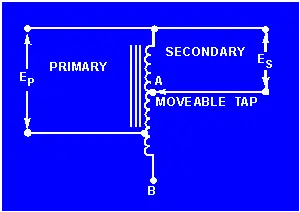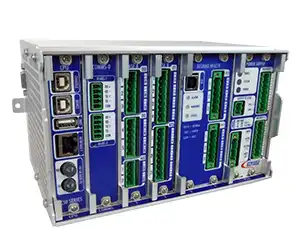Improved Sensor Technology Explained
By G&W Electric

Download Our OSHA 3873 Fact Sheet – Minimum Approach Distance and Training Requirements

- Calculate MAD using voltage and overvoltage values
- Ensure proper communication between host and contract employers
- Meet OSHA training requirements for qualified electrical workers
Improved sensor technology enhances accuracy, sensitivity, and reliability in electrical engineering, leveraging MEMS, IoT connectivity, advanced signal processing, calibration, and low-noise analog front-ends for superior data acquisition, diagnostics, and energy-efficient embedded systems.
What Is Improved Sensor Technology?
Improved sensor technology optimizes transducers and signal chains for higher accuracy and low-noise measurement.
✅ MEMS and transducer upgrades improve sensitivity and stability
✅ Advanced analog front-ends reduce drift and thermal noise
✅ Edge AI calibration enhances diagnostics and real-time accuracy
BACKGROUND
Many countries rely on diesel generation, coal, or hydropower to generate electricity. However, these generation methods aren’t keeping up with demand due to urbanization, a growing middle class, electrification of heating sectors, electric vehicles, and heat pumps. While prices for energy haven’t risen at the same rate as in other countries, it does contribute to a rise in inflation. As these dynamics unfold, insights into how the broader electricity grid operates help clarify system-level impacts.
Grid Automation:
A Necessity Grid automation is the process of enhancing the efficiency, reliability, and resilience of power distribution systems through the application of advanced technologies. Medium-voltage grids are essential for delivering electricity from power plants to consumers, making them a critical energy infrastructure component. The need for grid automation is driven by various factors:
- Renewable Energy Integration: With the increasing integration of renewable energy sources like wind and solar contributing to the rise of distributed energy resources (DERs), medium-voltage grids must accommodate fluctuating power generation. Sensors play a vital role in monitoring and controlling the grid to ensure stability and reliability as generation rises and ebbs throughout the day.
- Demand Response: Grid automation facilitates real-time monitoring and control of electricity supply, enabling utilities to quickly address demand fluctuations. Sensors enable the collection of accurate feeder data on consumption patterns, enabling utilities to make informed decisions and more accurate projections.
- Reducing Downtime: Accurate medium voltage sensors, which have more bandwidth than traditional instrument transformers, enable better detection of faults and power quality issues in the grid, allowing for earlier identification of potential issues. This proactive approach minimizes downtime and improves grid reliability
These functions align with the principles of the modern smart grid that emphasizes two-way communication and adaptive control.
FREE EF Electrical Training Catalog
Download our FREE Electrical Training Catalog and explore a full range of expert-led electrical training courses.

- Live online and in-person courses available
- Real-time instruction with Q&A from industry experts
- Flexible scheduling for your convenience
Grid Assessment:
The Key to Modernization To effectively modernize the grid, an in-depth understanding of its current state is crucial. Evaluating the health and performance of the medium-voltage grid is a key component of overall grid assessment. This requires enhancing assessment capabilities, including via the use of sensors. The following sensor aided assessments provide the foundation for informed decision-making in grid modernization efforts:
- Condition Monitoring: Sensors are deployed at various points in the grid to monitor the condition of apparatuses such as transformers, switches, and cables. Continuous data collection and analysis helps assess the equipment’s health and predict maintenance needs, preventing unexpected failures.
- Grid Performance Analysis: Advanced and accurate sensors capture real-time data on grid performance, including voltage levels, power quality, and losses. This information is invaluable for optimizing grid operation and reducing energy losses.
- Fault Detection and Location: Sensors together with proper intelligent electronic devices (IEDs) and fault locators, can quickly identify faults in the grid and pinpoint their direction and location. This capability reduces the time needed for repairs and minimizes service interruptions.
In practice, advanced condition monitoring programs integrate sensor data with analytics to predict failures earlier.
Modernizing the Grid Head-On
The modernization of medium-voltage grids is a multifaceted endeavor, and sensor technology plays a vital role in every aspect:
- Smart Grid Integration: Smart grid technologies leverage sensors to enable the sharing of more meaningful data between utilities and consumers. This integration facilitates demand response, improves load balancing, and enhances grid reliability.
- Network Technology: Advanced sensor networks are the backbone of modern grid management. These networks enable real-time data collection, remote monitoring, and control, making it possible to optimize grid performance and detect issues proactively.
- Asset Management: Effective asset management is critical to grid modernization. Sensors provide utilities with the information needed to make informed decisions about equipment maintenance, repair, and replacement, optimizing asset life and reducing operational costs.
Field deployments often pair sensors with advances in overhead switchgear innovation to extend reliability benefits cost-effectively.
Rogowski Coils and Capacitive Voltage Dividers: Detecting High-Frequency Disturbances
Sensors leveraging technologies which avoid ferromagnetic signal translation—such as Rogowski coils for current measurement, and capacitive voltage dividers—play a crucial role in enhancing medium-voltage grid automation, assessment, and modernization. These technologies are particularly well suited to provide wide current, voltage, and harmonic frequency range. These capabilities are important for measuring high-frequency disturbances, which are increasingly present in the modern grid. Here’s an in-depth description of the key role these sensors play: Within broader electric power systems, such wideband measurements strengthen coordination across protection and control.
- Rogowski coils are specialized current sensors instrumental in monitoring current waveforms with exceptional precision. They excel in capturing high-frequency disturbances, such as transients and harmonics, which are often indicators of grid instability. Their flexible design allows for easy installation around current-carrying conductors, making them ideal for retrofitting into existing mediumvoltage grid infrastructure. By continuously measuring current with high bandwidth, Rogowski coils provide essential data to identify and mitigate disturbances that could impact the grid’s reliability and quality. Additionally, because this technology is not limited in current range, it provides excellent flexibility to measure accurately at both very low currents and at high fault current levels.
- Capacitive voltage dividers are indispensable for monitoring voltage signals across the grid. Their ability to accurately capture high-frequency voltage variations, including voltage sags, swells, and harmonics, ensures that the grid operates within acceptable limits. These disturbances, often caused by rapid load changes or intermittent renewable energy sources, can affect the stability of the grid. Capacitive dividers facilitate real-time monitoring of voltage quality and enable quick responses to any deviations. By tracking high-frequency disturbances, capacitive dividers contribute to minimizing downtime and ensuring a consistent power supply
Incorporating Rogowski coils and capacitive voltage dividers into medium-voltage grid infrastructure equips utilities with the means to detect, analyze, and respond to high-frequency disturbances effectively. Their ability to capture these disturbances allows for more precise grid assessments, proactive fault detection, and optimized grid automation. These are all essential components of modernizing the medium-voltage grid. By addressing these high frequency issues head-on, utilities can ensure the grid’s long-term reliability and adaptability to the evolving energy landscape.
Test Your Knowledge About Smart Grid!
Think you know Smart Grid? Take our quick, interactive quiz and test your knowledge in minutes.
- Instantly see your results and score
- Identify strengths and areas for improvement
- Challenge yourself on real-world electrical topics
Building Capacity to Meet Future Distribution Needs
As medium-voltage grids play a central role in the distribution of electricity, their modernization is imperative to supporting a reliable and efficient energy future. Grid automation, grid assessment, and the integration of accurate sensor technology (like Rogowski coils and capacitive voltage dividers) are key drivers enabling a transformation that successfully addresses the complex challenges of the modern grid.
With sensors offering real-time data and insights, utilities can make informed decisions, reduce downtime, and enhance the overall performance of medium-voltage grids. This, in turn, helps build a more sustainable and resilient energy infrastructure that can meet the demands of the 21st century







